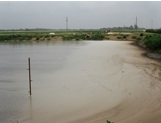
Features
Applications
Business/Policy
Dairy
Environment
Environment Protection
Protection
Sustainability
United States
What do you do if you dump your manure pond?
January 26, 2016 by Deanne Meyer UCCE Livestock Waste Management Specialist

January 26, 2016, Tulare, CA – Since May 2007, there’s been much written about the Dairy General Order in the Central Valley. Producers are curious about what happens when people have more liquid than their pond will hold. The old cliché of the best defense is a good offense applies. First and foremost, manage pond storage capacity so you have enough room.
Implementation of your Operation and Maintenance Plan is essential during rainy weather. If storage is a short commodity, do your best to minimize daily fresh water entering the pond and maximize diversion of roof run-off where and when feasible.
What happens if you apply manure beyond the amounts identified in your Nutrient Management Plan? Notify the Regional Board immediately. Based on Violation Notices written by the Central Valley Regional Water Quality Control Board “Pursuant to Monitoring and Reporting Program (MRP) Section C, ‘Priority Reporting of Significant Events,’ ” the written report required by this section is due within two weeks after the date you became aware of the noncompliance incident. You must provide this report immediately to avoid accumulating additional potential liability for violations of the General Order. The report should contain a description of the noncompliance, its causes, duration, and the actual or anticipated time for achieving compliance, and details of the steps that you have taken or intend to take, in order to remediate the problem (please see items 1 to 8, page MRP-11 of the Order). Remediation must include removal of all excess manure from the cropland. In addition, the “quantity of manure discharged and total amount of nitrogen within the manure must be included in the report.” Note the remediation of removal of excess manure applied requires scraping manure and soil from the field and exporting it off-site or to a location on-site where the nutrients may be used. This relocation activity also requires a paper trail to document what was done. The Violation Notices further identify the need for detailed soil sampling requirements and that the operator will continue to accrue potential daily liability until they comply with the Notice of Violation. A facility is subject to additional enforcement action, and/or termination of authorization to discharge according to the General Order, Provision E.10 if there is no compliance with the Violation Notice.
Nutrient Management Plans are designed to help you manage your nutrients and comply with the General Order. If your facility has challenges holding liquids until it’s appropriate to land apply nutrients, it’ll be important to have a conversation with your design engineer and identify what options exist for improving holding capacity for your operation.